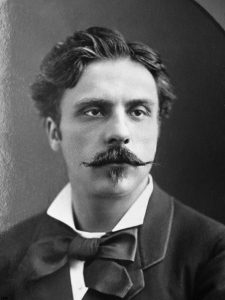
By Robert Croan
The first-desk players of South Florida Symphony Orchestra are not an official ensemble, like, say, the Chamber Music Society of Lincoln Center or the Beaux Arts Trio. They get together each summer for a series of three modest monthly concerts — each performed in two South Florida venues — which provide some of the best classical music to be heard in this area.
In terms of quality, on the basis of last year’s events and the latest one last week, I’d go out on a limb to say they’re competitive with any of the starrier combos on the music scene today. With each player proficient and virtuosic in their own way, they play as equals, each in turn taking the lead and shining in an appropriate moment. They make it obvious in every note and phrase how much they enjoy making music together in small, intimate combinations. That’s the very essence of chamber music.
The first in this summer’s series (heard May 17 in Fort Lauderdale’s Center for Spiritual Development) featured piano quartets by Gabriel Fauré and Johannes Brahms, played by pianist Tao Lin, violinist Huifang Chen, violist Brandon Wu and cellist Claudio Jaffé. Less than 90 minutes of actual music, but jam-packed with feeling and exhilarating in its impact.
As cellist Jaffe quipped in his cogent verbal program notes preceding the piece, Fauré’s Piano Quartet No. 1 (in C minor, Op. 15) is one of the most French pieces in the repertory, and “we apologize for not being French.” No apologies needed: the performance was entirely in style.
The opening movement was richly colorful, exploiting the fact that the piano’s greatest asset in chamber music is that it doesn’t blend with strings, but rather provides a continuous underpinning interspersed with its own assertive voice. With its exquisitely undulating arpeggios (broken chords) and offbeat syncopations, the allegro contains suggestions of jazz and Impressionism, although this work was composed in 1879, when neither had yet happened in the musical world.
But it’s the second movement Scherzo, the shortest of the four, that makes this quartet so special. It’s a rapid, ephemeral amalgam of a march and a waltz, unlike anything else in all chamber music. Jaffé likened it to butterflies. I’d suggest a delectable soufflé. It’s also very difficult to carry off, and the SFSO players managed it with deceptive ease and a sense of Gallic joie.
If that Scherzo is a soufflé, the Adagio that follows might be likened to a juicy entrecôte: serious business, perhaps reflecting the composer’s broken romance with the renowned singer Pauline Viardot. The brisk final movement, entirely revised by Fauré three years after the premiere, continues the thoughtful aura, harking back to earlier motives, and these sensitive artists deftly delineated the varied sentiments.
Even though French and German music differed significantly in the second half of the 19th century, Fauré is said to have been influenced by Brahms’s 1861 Piano Quartet No. 1 (in G minor, Op. 25). Fauré’s music is typically understated and subtle, while Brahms was extroverted and demonstrative, but there are many similarities in how the two composers handled their themes and the interactions among the four instruments, in their respective first attempts with this uncommon combination.
The Op. 25 is one of Brahms’s most vigorous works, youthfully exuberant from its square opening octaves in the piano blossoming into aggressive big chords not far into the exposition. The performers dug into this with relish, chomping at the big parts yet pulling back sufficiently to allow the lyrical segments to sing. Pianist Lin asserted himself properly in the Intermezzo that serves as a scherzo, while the entire group relaxed into the following lyrical and melodious Andante.
It was in the Presto finale, based on gypsy-type tunes, that the fireworks began and never stopped. This was a whirlwind virtuoso realization. Unanticipated in its energy and the obvious elation of the performers, their collective energy pervaded the music and transferred to the listeners, who rose to a much-deserved standing ovation when it was over.
The second program in this series will feature Russian piano trios, June 20 (Coral Gables) and June 21 (Fort Lauderdale); the third program includes string quartets by Mendelssohn and Ravel, July 25 (Miami) and July 26 (Fort Lauderdale). Details: www.southfloridasymphony.org.